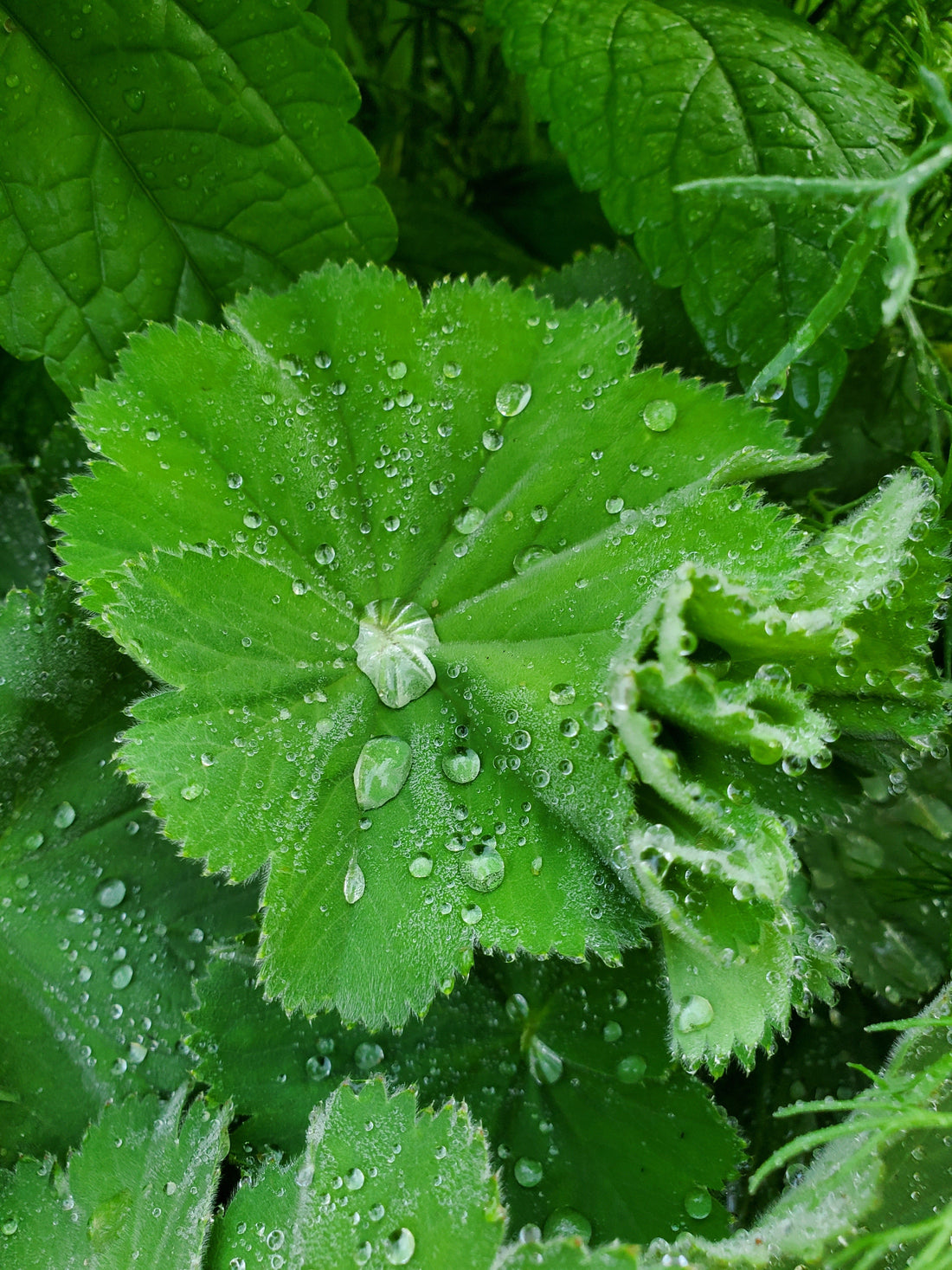
Lady's Mantle Monograph - Alchemilla Vulgaris
Share

Common Name - Lady’s Mantle
Synonyms - Lions Foot, Bears Foot, Nine Hooks, Leontopodium, Stellaria (5)Latin Name - Alchemilla Vulagaris
Family - Rosaceae (2)
Parts of plant used: Leaf (1) Root (5)
Taste: Astringent (2)
Affinities: Female reproductive system, Venous Circulation, Digestive System (2)
Energetics: Bitter, Cooling, Drying (1) (2)
Medicinal actions: Astringent, Vulnerary , Emmenagogue
Alchemical affinities - Venus, water (1) (3) (4)

Preparations
Infusion/Tea
1 oz herb to 1 Pint of boiling water, in tea cup doses. (5)
Tincture: To make a tincture, tincture it 1:5 in 25-30% alcohol. An average dose is 2 to 4 mL three times a day (6)
Recipe for Post Partum Tea
2 parts Lady’s Mantle leaf
2 parts Raspberry leaf
2 parts Lemon Verbena
1 part Rose
Boil water and steep 2 Tablespoons of the tea mixture in 1 cup of water for 10 minutes. Strain and drink daily as desired.(6)

General
The history of Lady’s mantle dates back to alchemists across Europe, recognizing the magical properties of this plant and utilizing it in alchemical and mystical potions. It was and still is believed to have magical properties, the name Alchemilla Vulgaris itself meaning “little alchemist” or “little magic one”. Alchemists and herbalists alike recognized the uniqueness of the dew gathering in the leaves and would collect the morning dew for their formulas, which were believed to purify and cure many ailments and conjure magic into their preparations.Aside from this alluring folklore, we know Lady’s mantle is rich in tannins and salicylates that make up its structure. Likely the prolific wound healing properties are attributed in part to its rich tannin content. Historically tannins are used to tonify or tighten tissues - ulcers, prolapsed uterus or anus, hernias, diarrhea, sores and wounds are all conditions tannins would be beneficial in helping restore and “tone up” tissue.
The astringent nature of tannins are also beneficial to weeping or oozing infections like conjunctivitis, pus filled abscesses, and weeping skin infections . The anti-inflammatory nature of the salicylates points to relief of pain in particular muscular pain, rheumatism, but also rashes and skin afflictions. Lady’s mantle is well known for beautifully repairing torn skin and bringing together tissue to heal making it useful for wound healing.
The most potent and well known use of lady's mantle is as a uterine tonic. Its affinity for reproductive anatomy is widely accepted and often used for restoring and stabilizing the uterus. Notably this herb is used for when the womb has experienced trauma, from violent birth, sexual abuse/assault, endometriosis, fibroids, abortion or any other trauma related to this area.

Quotes - Poetry
“The generic name Alchemilla is derived from the Arabic word Alkemelych (alchemy), and was bestowed on it, according to some old writers, because of the wonder-working powers of the plant. Others held that the alchemical virtues lay in the subtle influence the foliage imparted to the dewdrops that lay in its furrowed leaves and in the little cup formed by its joins stipules, these dewdrops constituting part of many mystic potions.- Grieve Modern Herbal, 1940
“She will write him a letter to tell him
How cool and wet her garden is this July,
How beautiful the alchemilla is,
A strange citrus, petal-less froth above
The green nearly-circles of the fanned leaves.
They are the shape of its other name –
Lady’s Mantle – an outspread cloak, pleats
Stitched with pearls of dew, scallop-edged;
Designed for wrapping and unwrapping,
A honey-scented aphrodisiac.
Alchemilla is after alchemy –
The magic water it breathes through its leaves
Part of the ancient recipe for melting
Metals into gold” – from The Lady’s Mantle Letter, Linda France
References/Research
1 Sajah Popham https://www.evolutionaryherbalism.com/2023/08/02/ladys-mantle-the-little-alchemist/
2 Herb Reality Lady’s Mantle monograph https://www.herbalreality.com/herb/ladys-mantle/
3 Rowan and Sage - Sarah Corbett https://rowanandsage.com/blog/ladysmantle
4 Textbook of Advanced Herbology - Terry Willard, page 376
5 Modern Herbal Volume 2 - M. Grieve
6 Herb Rally. Monograph by Leslie Lekos